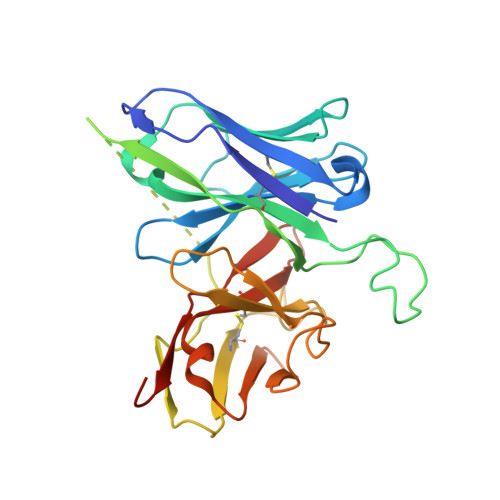Design of the SARS-CoV-2 RBD vaccine antigen improves neutralizing antibody response.
Dickey, T.H., Tang, W.K., Butler, B., Ouahes, T., Orr-Gonzalez, S., Salinas, N.D., Lambert, L.E., Tolia, N.H.(2022) Sci Adv 8: eabq8276-eabq8276
- PubMed: 36103542
- DOI: https://doi.org/10.1126/sciadv.abq8276
- Primary Citation of Related Structures:
8DCC, 8DCE - PubMed Abstract:
The receptor binding domain (RBD) of the SARS-CoV-2 spike protein is the primary target of neutralizing antibodies and is a component of almost all current vaccines. Here, RBD immunogens were created with stabilizing amino acid changes that improve the neutralizing antibody response, as well as characteristics for production, storage, and distribution. A computational design and in vitro screening platform identified three improved immunogens, each with approximately nine amino acid changes relative to the native RBD sequence, and four key changes conserved between immunogens. The changes are adaptable to all vaccine platforms and compatible with mutations in emerging variants of concern. The immunogens elicit higher levels of neutralizing antibodies than native RBD, focus the immune response to structured neutralizing epitopes, and have increased production yields and thermostability. Incorporating these variant-independent amino acid changes in next-generation COVID vaccines may enhance the neutralizing antibody response and lead to longer duration and broader protection.
- Laboratory of Malaria Immunology and Vaccinology, National Institute of Allergy and Infectious Diseases, National Institutes of Health (NIH), Bethesda, MD, USA.
Organizational Affiliation:

















